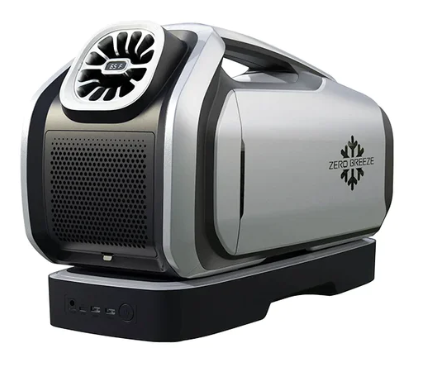Beware: You should never explore wild caves alone or without proper gear. Consider getting in touch with a Grotto of the National Speleological Society at www.caves.org or a qualified cave club. These groups are skilled and will train you. Without sufficient knowledge, preparation, and equipment, cave exploring can lead to serious injury or death.
If you’re planning to go to the Silver State for the outdoors experience, you’ve made a great choice. Most of you must be interested in going caving, but with so many caves (over 30,000), it’s likely that you’ll need more than a weekend. It’s best to turn it into a longer trip, where you can combine caving with camping while you’re enjoying the natural beauty of Nevada.
Rugged landscapes, expansive deserts, and breathtaking mountains beckon outdoor enthusiasts every year. More than 1.1 million tourists flock to Death Valley annually, even as temperatures continue to rise to dangerous levels. Some of these locations attract even more than that. Don’t forget to put safety first; the deserts are unforgiving to say the least. While Nevada is known more for the vibrant Las Vegas and its many iconic attractions, there’s also a wealth of camping opportunities that help reveal the state’s natural wonders.
In this article, we’ll embark on a journey through some of these destinations, so you can get a better idea of how to go about camping in Nevada. Bringing an RV, or perhaps making it a trip for the whole family? I figured you might! I’ve tried to include some essential tips for just about any type of trip. Let’s get started!
Famous Sites for Camping in Nevada
If you’re trying to see some of the most breathtaking views, and don’t mind running into other tourists, this list is for you. These are some of the most famous locations in Nevada, and each has plenty of activities for everyone to enjoy. If you’re more interested in camping in more remote locations, continue further down or click here to jump to that list.
Great Basin National Park
With its ancient bristlecone pine forests and the stunning Lehman Caves, the Great Basin National Park is a popular choice. The pine forests here are among the oldest living trees on Earth, some dating back over 4,000 years. And if you’re interested in caving, the stunning Lehman Caves are located here. You’ll get to see the intricate limestone formations, and immerse yourself in some of America’s richest history.
At the Great Basin National Park, there’s five campgrounds to choose from. You’re free to bring either tent, or RV (or both!). It costs $20 per night, with a $10 discount for seniors/access pass holders.
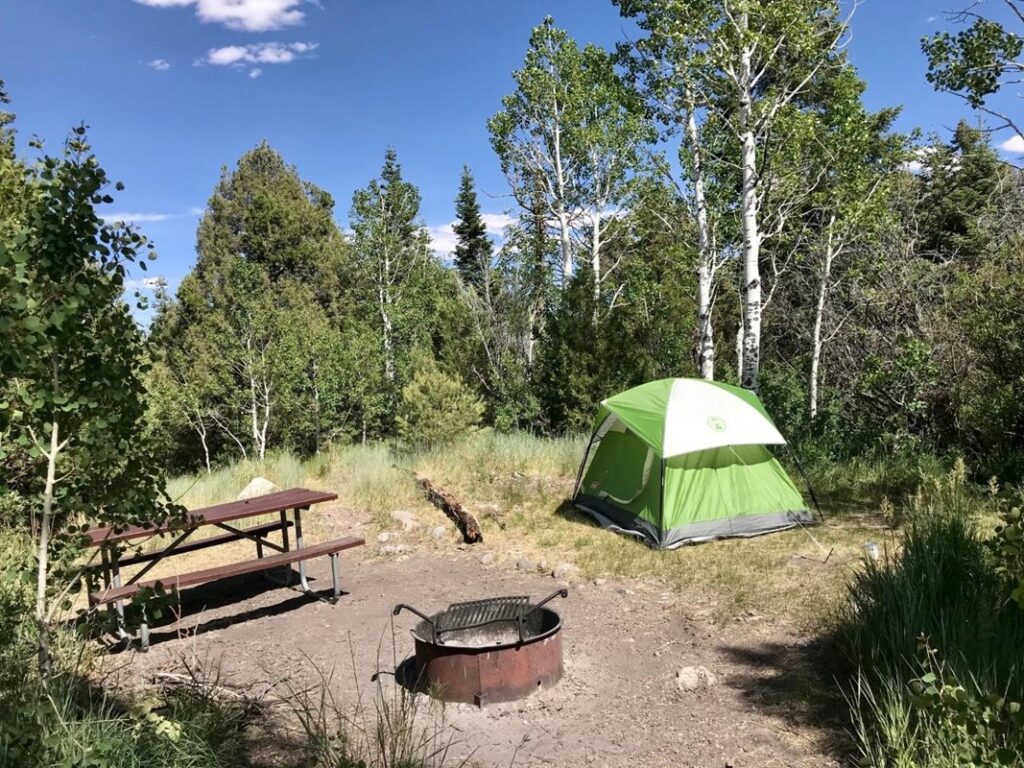
Valley of Fire State Park
Known for its fiery red sandstone formations, the Fire State Park is next on our list. Some say these formations appear to be on fire when hit by the sun’s rays; you’ll probably agree. The atmosphere is phenomenal. You can find 2000 year-old petroglyphs etched into the rocks, offering a bit of history about the cultural past of the area.
With three group-use campsites, each accommodating 45 people, you will have plenty of space. Make reservations for overnight stay beginning from November of each year. It costs $25/night for overnight campers, only $20 if you’re a Nevada resident. There’s a lot of great hiking potential here, as in most places in Nevada, but not much of caving nearby. Be sure to check out Mouse’s Tank Trail, which you can check out in the video below.
Lake Tahoe
Lake Tahoe is a popular spot, with beautiful lakes and a majestic mountain backdrop. It’s basically paradise for the outdoors lovers. Upwards of 15 million people visit Lake Tahoe each year, so you’ll always have company if you do decide to make the trip. goog
It’s perhaps an understatement to say there’s dozens of campsites available, with secluded spots for those who want a little more privacy. If you prefer the lake views, you can always set up near the beaches. Camping at Lake Tahoe will give you the option to go kayaking, swimming, fishing, and of course hiking on any of the numerous trails available.
While it’s a bit of a drive, the Black Chasm Cavern in California might be worth a trip while you’re around Lake Tahoe. It’s about 2 hours away, and has guided tours and fun for the whole family. The Moaning Caverns, also in California, are about 2 and a half hours away, for a second option.
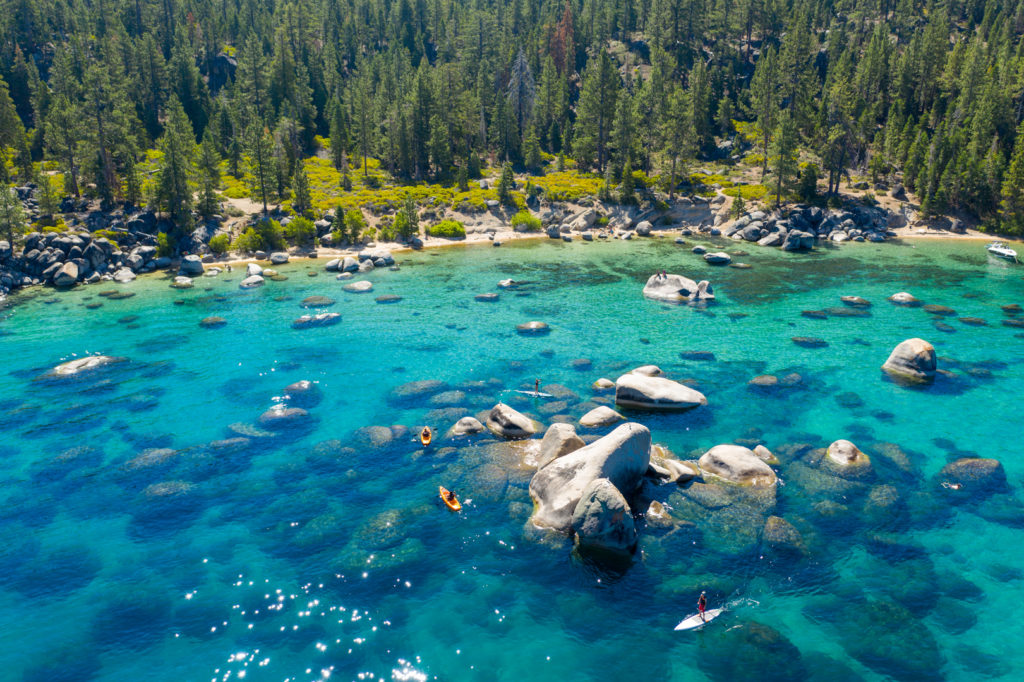
Red Rock Canyon
The stunning desert landscape of Red Rock Canyon will be a fond memory for a long time. Climbing, hiking, camping – people just love this location for multiple reasons. The beauty of the Mojave Desert on full display, with the colorful Las Vegas lights not too far away? Keep your iPhones ready for a lot of photos.
The downside, though, is that there aren’t any major caves nearby. You can enjoy viewing the interesting wildlife, but at an hour away, Wind Cave is the best option for cavers, and it’s not the most spectacular location. However, if it’s on your list, be sure to plan accordingly.

Ruby Mountains
The Ruby Mountains are found in northeast Nevada, and known for their rugged beauty. There aren’t any caves found in the mountains themselves, but a few are located in the general area. People visit for camping, hiking, fishing, scenic drives, and even snow sports during the colder seasons.
You can bring an RV or tent, and take in the wildlife and scenery here. The Lehman Caves are about a 2-hour drive from the Ruby Mountains, with some smaller caves scattered throughout the area. The Lehman Caves are found in the Great Basin National Park.
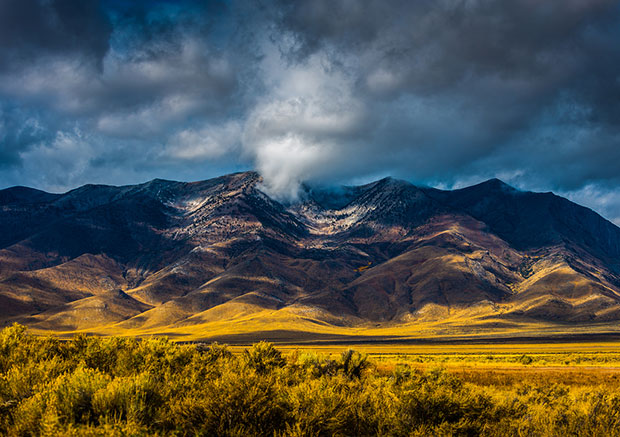
Cathedral Gorge State Park
Cathedral Gorge State Park is located in a narrow valley in southeastern Nevada. The soft bentonite clay was carved out through erosion over thousands of years, and now displays a plethora of unique patterns. While you’re out here, you can learn about the volcanic activity that produced the park, and witness some of the cave-like formations that are millions of years old.
There’s over 20 camp sites, each with tables, grills, and electric hookups. Water and restrooms with showers are available, but camping is limited to 2 weeks in any 30-day period, which is plenty of time to take it all in.
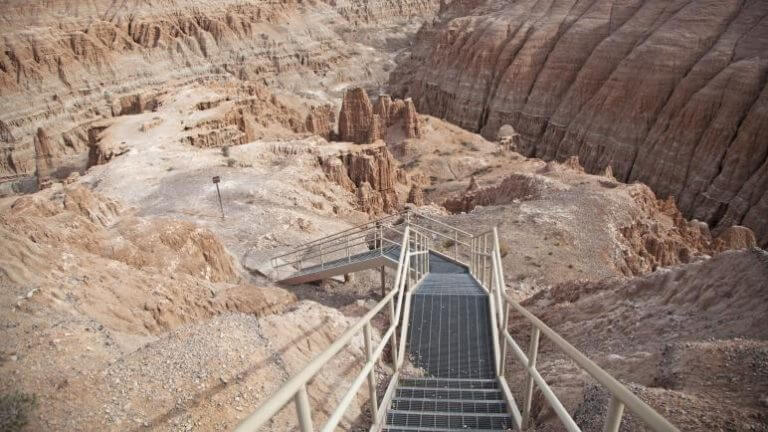
Low-Key Camping Sites in Nevada
What you might not know is that Nevada’s public grounds are open to all camping. There’s no fee for the most part, but you might not be able to stay in one place indefinitely. This results in a ton of interesting, more secluded locations for those of you who are trying to dodge the tourists. Whether you’re bringing the whole family in the RV, or just trying to enjoy some time alone backpacking, there’s no shortage of nice locations to set up camp.
Pine Creek Campground
Located in the Alta-Toquima Wilderness, this spot is remarkably remote, and yet still properly maintained. It’s like a high-quality campground should be. It’s got great reviews, and you’ll likely see nobody else while you’re out there.
With camping, fishing, and horseback riding, you have several options. There’s also an interesting history here: Nevada’s first inhabitants, the ancient Shoshone, lived in and around these mountains for thousands of years. This land was sacred to them, and the highest known Indian village in North America is actually found around the peaks of Pine Creek Campground. This village was found on the saddle of the middle and south peaks. Keep an eye out for Basque Arborglyphs, ancient tree carvings, left by sheepherders long ago.
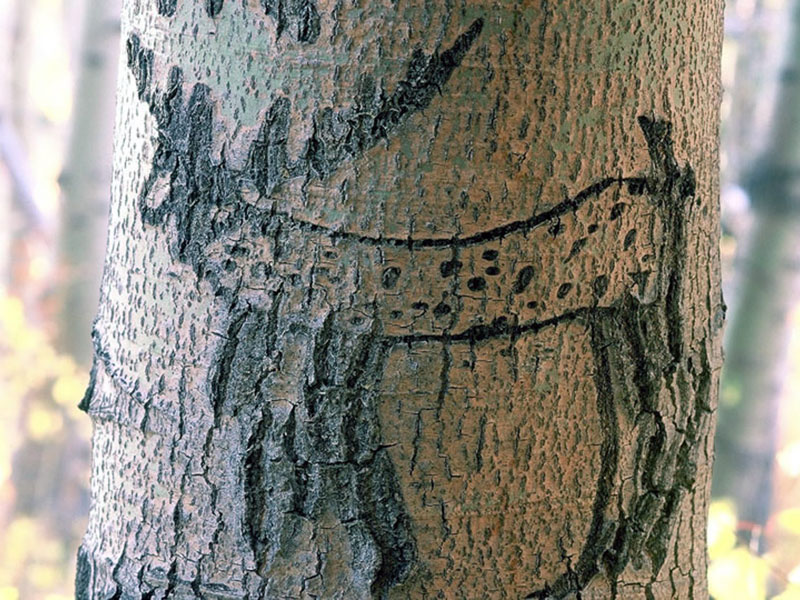
The Alta Toquimas are a land of mystery, said to be one of the most unusual environments in the U.S. due to extreme alpine conditions. Explore lush green canyons, pinyon forests, moss covered rocks, sagebrush and beyond. Because the canyon is so lush, a massive amount of wildlife is drawn to the area for water. Be sure to keep your binoculars and camera read to spot deer, sage grouse, chukar, native trout, raptors, owls, lizards, and mountain lions. The area is also home to the largest population of desert bighorn sheep in the world, who thrive in this secluded, high altitude terrain.
Open seasonally between May and November each year, each of the 21 developed campsites here are equipped with picnic tables, barbecue grills, and access to pit toilets. Better yet, most of the sites here are shaded and Pine Creek-side, making summer visits a refreshing retreat.
East Fork of the Walker River
The Walker River State Park features historic structures and fascinating wildlife habitats, all maintained and protected by the Walker Basin Conservancy.
The East Fork refers to a particularly great stretch of the East Walker River, which had been under private ownership for over 125 years. Now four distinct park units offer top-notch camping, biking, wildlife viewing, nature trails, OHV exploring, world-class fishing, and more.
Fly fishermen love this area. Two dozen campsites with direct access to the river are scattered about, so you’ll have no problem finding a nice spot.
You might be interested to learn about the 9 Mile Ranch as well. Named for being 9 miles from the junction to the lawless towns of Aurora and Bodie. The ranch was so well known that Mark Twain included it in his book, Roughing It. The home is unfortunately not available for tours, but you might appreciate its history nonetheless.
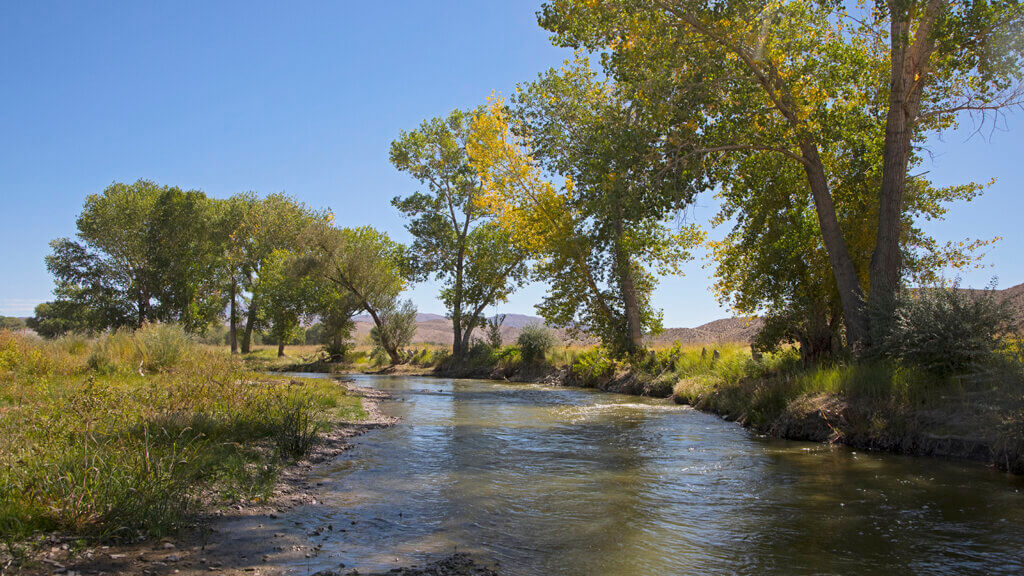
Fletcher View Campground
Fletcher View Campground sits 7000 feet above sea level in the Spring Mountains near Mt. Charleston, about 36 miles from Las Vegas.
There’s 11 campsites (all with electric hookups) here, and since it’s in the mountains, the summer weather is great. The campground is open year-round, however, so you don’t have to plan for a summer trip if you don’t want to. You’ll be in an open forest of ponderosa pine, mountain mahogany, and Gambel oak. Sounds serene, doesn’t it?
Drinking water, flush toilets, and good cell service, it’s definitely comfortable for a low-key spot. Trailers and small RVs can be accommodated, but you may want to inquire if you’re bringing something bigger.
Visitors said it’s really easy to get in and out of, and many do bring RVs. But plan ahead; it’s closed during the rainy season due to flash flooding.
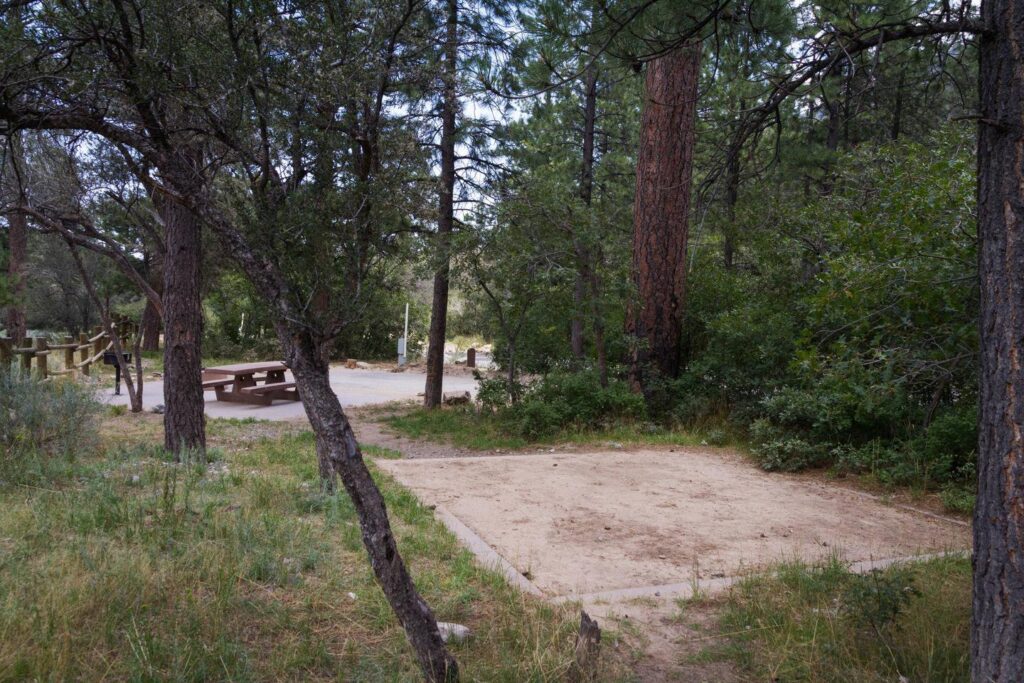
Boulder Beach Campground, Lake Mead
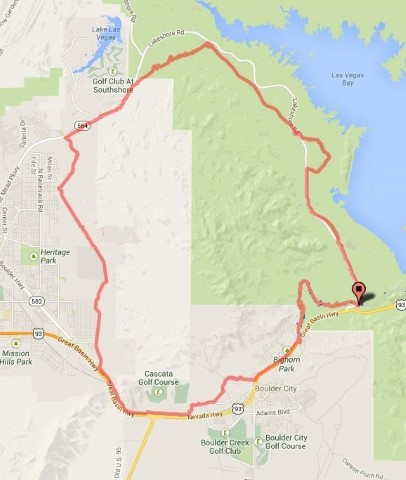
Boulder Beach Campground is sometimes called an oasis. You can find palm trees and oleanders mixed with native vegetation, along with tons of wildlife. Birds, lizards, squirrels, and even coyotes live around here, enjoying the same view of Lake Mead that you will have.
The campsites accommodate up to 8 people, and paved roads make transportation easy. Multiple spigots and restrooms are scattered throughout the campground, with flush toilets. However, there are no showers.
Some activities available include swimming and kayaking. You might be pleased to learn that you can jetski here, which isn’t always available at some of these smaller, more remote sites. Several spots like Boulder Beach, Canoe/Kayak Beach, and PWC beach are only 1-2 miles away.
If you’re there for the hiking, there’s a great paved trail called the River Mountains Loop Trail, which stretches over 30 miles long. You can see it on the map to the right.

Non-Essential, But Good to Have
There’s a lot of things people like to add to their RVs to prepare for the often brutal heat in Nevada. Once you’ve got your essentials like your boots, tent/tent footprint, and enough snacks, there’s a few other non-essential-but-worth-having things you might need.
In the summer, temperatures in Nevada are constantly over 100°F. Having a source of cool air could dramatically improve the quality of your trip. There’s a good variety of portable A/C units built for the outdoors, like the one shown on the right, that can turn the sauna in your tent into something more peaceful.
A small solar panel can be enough to power all your smart phones, GPS devices, cameras, and even portable lights. If you’re planning on staying somewhere more remote without reliable power sources, this is one option. If you’re going to be in an RV, you can opt for whatever size seems manageable for you. A lot of people are putting these on top of their RVs now, and for good reason.
This GRECELL 100W Solar Panel comes with an MC-4 connector, compatible with most solar generators/portable power stations on the market. The built-in smart chip intelligently identifies your device and maximizes its charging speed while protecting your devices from overcharging and overloading, providing more energy and a longer lifecycle than conventional polycrystalline solar panels.
This one’s a definite essential for me: insect repellent. I wouldn’t go without it, and so I recommend that you don’t either.
Murphy's advertises that their balm uses a combination of plant-based repellent oils recommended by the EPA that other manufacturers tend to overlook, including Castor Oil, Lemongrass Oil, Rosemary Oil, Cedarwood Oil, and Peppermint Oil.
Plus, it's 100% DEET Free, with no dyes, synthetic fragrances, or harsh chemicals.
You should use a higher percentage of DEET if you will be outdoors for several hours. Go for something with 23% or higher DEET for 5 or more hours of protection.
If you’re hoping to just keep them away indefinitely while you’re hanging around the campgrounds, you might want to go with a rechargeable repeller, like the one shown below. Just use your solar panel to keep the repellent running, and those annoying mosquitos will fail to ruin your trip.
This Thermacell E55 Mosquito Repellent creates a 20-foot zone of protection against mosquitoes. People and pet friendly.
Conclusion
Camping in Nevada unveils a world of untamed beauty and outdoor adventure. You can escape the everyday life for a weekend, or a couple weeks and reconnect with some of the wonders that nature presents us. Alpine lakes, tremendous desert canyons, hidden hot springs, and intriguing wildlife await you.
If you’re a big fan of the desert and remote outdoors, going camping in Nevada is a must. It will be like a playground for you and your group of friends or family.
Comfort is the most important thing in a trip to some of these harsher climates. Be sure to double check your list of clothes and gear, plan accordingly, and be safe. Follow the Leave No Trace principles, especially if you’re out camping in some of the more remote locations of Nevada, and when you’re exploring some of the many wild caves in the state. Have fun on your trip!

